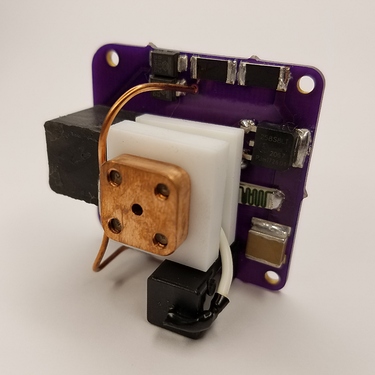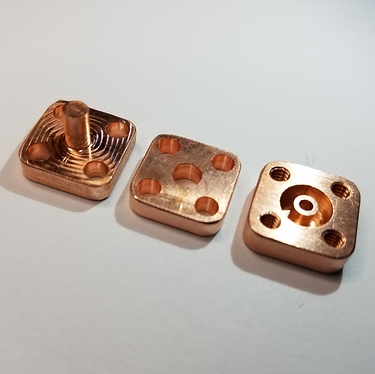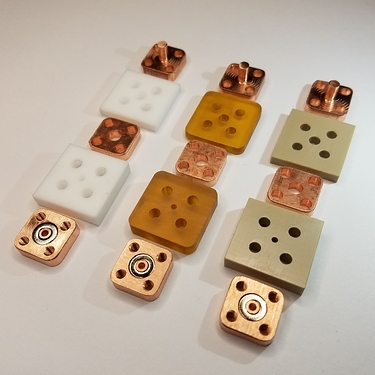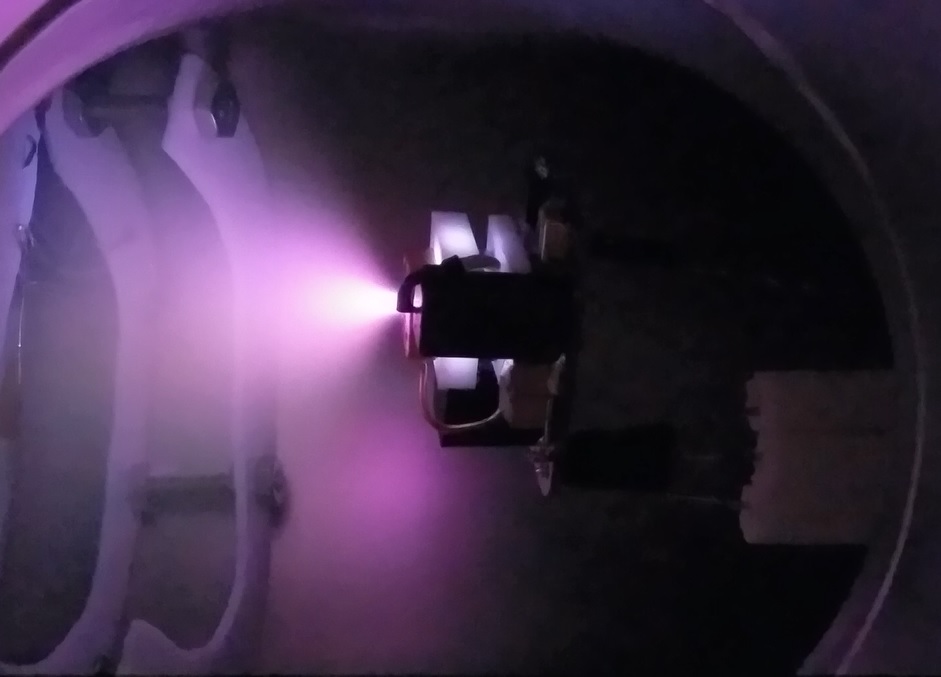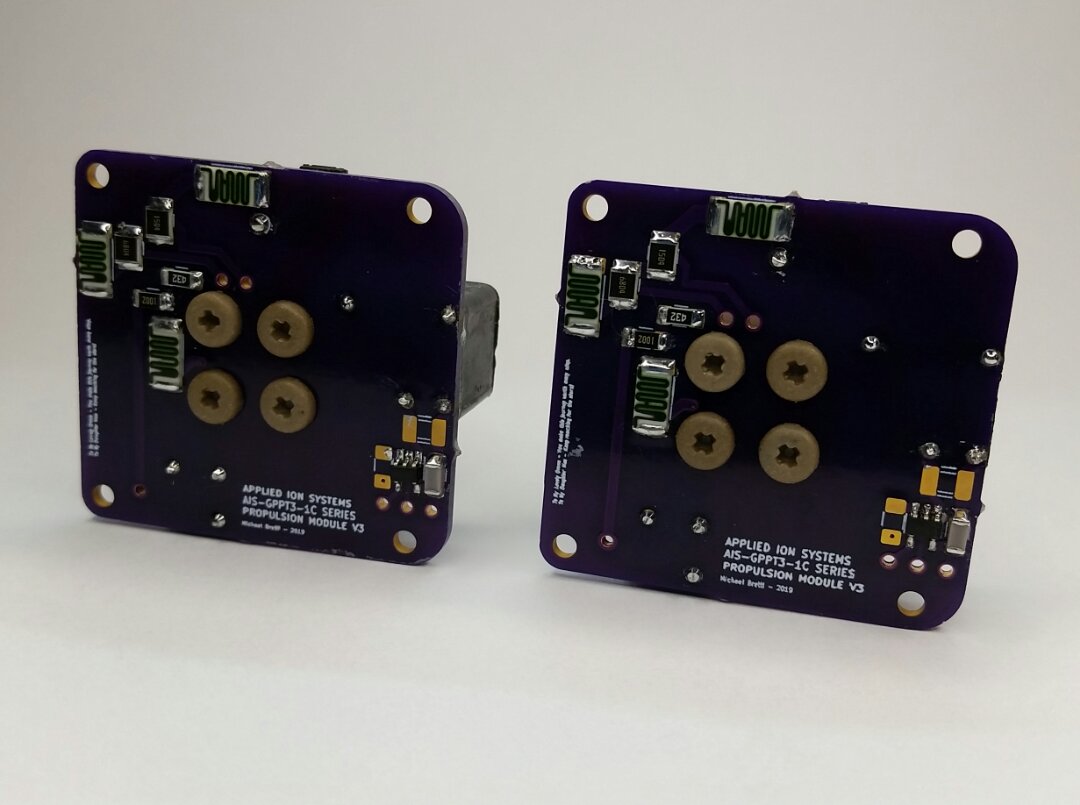Greetings to the Libre Space community. This is really my first official post here. I am finally at the point where I can start sharing details of my work with the broader open space community. If you haven’t already been following my efforts on social media, I am currently working on the first and only open-source home-based advanced electric propulsion program out there, with a specific focus on developing open-source, ultra-low cost electric propulsion technology for PocketQubes. I literally design and build thrusters on the dining room table, and fire them in the basement! I started my high vacuum system build over a year ago, and began my first propulsion designs at the beginning of the year. This past Friday, I successfully tested for the first time my first completed, fully integrated open-source propulsion module for PocketQubes: the AIS-gPPT3-1C, a unique sub-joule micro pulsed plasma thruster (PPT).
This thruster is made to be completely compatible with PocketQube size and power restrictions. Currently, there is no propulsion available for PocketQubes, making this the first system to be available for this class of satellites. Total dimensions are 40mm x 38mm x 24mm, with a peak power draw of 825mW, and average power draw of 163mW (simulated, still needs to be measured). Final mass is 34 grams. The thruster is sized to be used down to 1P PocketQubes.
The onboard electronics can be directly powered from PocketQube 3.3V power. A simple HIGH/LOW logic command is used to enable the high voltage supply. A logic pulse is used to directly trigger the igniter, which is driven by a sensitive gate thyristor. The circuitry boosts the voltage to 1kV for charging the main 0.2uF capacitor bank in 3 seconds. Simultaneously, a 0.1uF capacitor is charged to 300V for the igniter circuitry, which dumps this energy into a pulse transformer to deliver 5kV pulses to the igniter to trigger the main discharge. Nominal repetition rate is 0.33-0.25Hz.
Currently, I am exploring ways of optimizing performance at the incredibly low energies the thruster is operated at. There has been some limited work in the past for small sub-joule pulsed plasma thrusters, but this thruster takes the field to a new level. Total energy per shot is around 0.09J, making this potentially the lowest energy PPT ever designed and fired. I am in the process of exploring new fuels in addition to classical Teflon, including Ultem, PEEK, and Bismuth-Tin. The first three listed fuels can be seen assembled with the electrodes:
The thruster itself is made with a highly unconventional topology using flat-stacked plates to minimize space for the incredibly tight requirements for PQs. The design is kept simple to make the thruster cheap and easy to assembly.
Another unique feature of this thruster is the use of an embedded high-strength permanent magnet in the anode output plate to act as a magnetic nozzle to increase thrust. Work on a related thruster technology in literature, Vacuum Arc Thrusters, has shown that magnetic nozzles can increase thrust gains by up to 30%. Since this thruster operates in an electrothermal mode of acceleration, rather than typical electromagnetic acceleration seen in larger, higher power, and diverging electrode PPTs, the magnetic field can be used to accelerate the electrothermal portion of energy. As far as I am aware, this is also the first time an integrated magnetic nozzle has been used with such a low-energy PPT, and fully integrated into the structure.
Here you can see the thruster firing in my high vacuum chamber. Vacuum level was 1x10^-5 Torr. The thruster module was powered and controlled externally with an Arduino Uno with 3.3V and control signals from the Arduino. In the captured shot of the thruster firing, you can see a beautiful pink plasma plume emanating from the thruster, which also partially illuminates the Teflon fuel from the inside. Video of actual operation is on social media, and I will be uploading it to my website and Youtube soon.
Overall this has been an immensely challenging task, resulting from hundreds of hours of research, design, preparation, and testing, but is still only the beginning. The thruster will undergo full testing to determine impulse-bit, thrust, and lifetime, eventually looking towards ion velocity measurements and plume discharge current as well down the road. I have already performed impulse-bit measurements on the prior prototype thruster, the AIS-gPPT2-1C (tested with external HV supplies and not with integrated electronics) with a simple micro-pendulum stand I built. My next upcoming test will be performing impulse-bit and first lifetime tests on this new thruster with the Teflon fuel.
The thruster has already achieved many firsts in the field of propulsion, and is breaking down barriers for accessibility to ultra-low cost open source propulsion. I upload complete information of everything I do in excruciating detail on my website, http://appliedionsystems.com/. I plan on continuing these efforts and further developing more electric propulsion for PocketQubes and even Cubesats, looking at cost reduction over an order of magnitude than current propulsion solutions on the market (as of now, none yet for PocketQubes besides this). I already have the V2 design complete, allowing for direct analog reading of the main bank and igniter bank voltages to determine thruster firing in space, as well as pulse counting, lifetime, and other pulse measurements.
Besides developing new thruster technology for these class of satellites, I want to lower the barrier of entry in the field, and make propulsion more accessible, by using a unique open-source approach to propulsion, and actively engaging the community with full details of the builds. I will eventually be moving towards full live-streams of thruster tests as well. You don’t need millions of dollars, massive facilities, a PhD, or crazy state-of-the-art tech to do advanced propulsion research! Advances in space technology and propulsion CAN be accomplished in an open-source manner, even at home!
